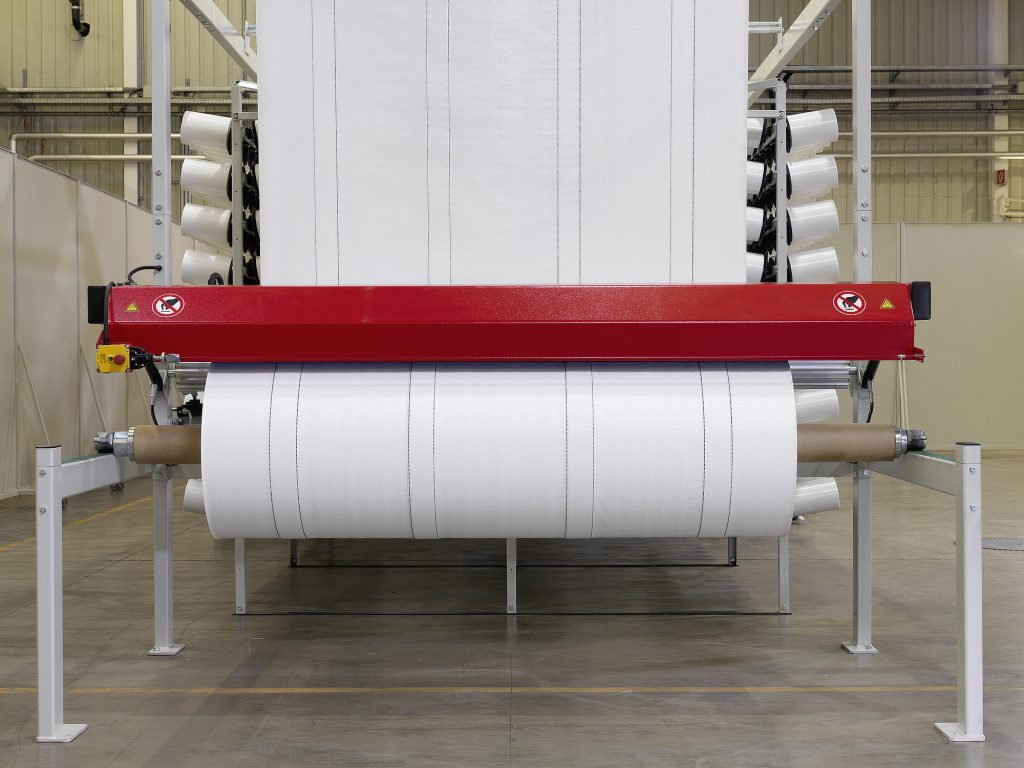
- 1. Material Quality Assurance: Testing PP and PE Granules
- 2. Advanced Printing Technologies for Brand Differentiation
- 3. Functional Enhancements: PE Coating and Valve Design
- 4. VidePak’s Competitive Edge: Scalability and ESG Compliance
- 5. Case Study: PE-Coated Bags in Construction Waste Logistics
- 6. FAQs: Addressing Client Concerns
- 7. Future Trends: Smart Packaging and Circular Economy
Introduction
In the competitive landscape of industrial packaging, PE coated valve woven bags are revolutionizing logistics and branding by combining durability, moisture resistance, and high-quality printability. These bags, designed for heavy-duty applications such as construction waste, chemicals, and agricultural products, now account for 22% of the global flexible packaging market. For manufacturers like VidePak, which integrates advanced printing technologies with rigorous material testing, the key to dominance lies in delivering customizable, UV-resistant prints on PE-coated PP substrates while ensuring compliance with global ESG standards .
Ray, CEO of VidePak, emphasizes: “A construction client once told me, ‘Your bags don’t just carry debris—they carry our brand’s reputation.’ That’s why we enforce a 12-step quality protocol for every batch, from raw PP granules to final print inspections.”
1. Material Quality Assurance: Testing PP and PE Granules
VidePak’s production begins with stringent testing of raw materials to ensure performance and safety.
1.1 PP Granule Testing
- Basic Physical Properties:
- Melt Flow Index (MFI): Measured via ASTM D1238, MFI values (8–12 g/10min) ensure optimal extrusion viscosity for uniform weaving .
- Density: 0.905–0.925 g/cm³ (ISO 1183), critical for balancing tensile strength and flexibility.
- Mechanical Properties:
- Tensile Strength: ≥35 MPa (ASTM D638), preventing seam failures under 2,000 kg loads.
- Elongation at Break: 400–600% (ISO 527), essential for absorbing impact during transport.
- Thermal Properties:
- Heat Deflection Temperature (HDT): 100–110°C (ASTM D648), ensuring stability in high-temperature environments like cement plants.
1.2 PE Coating and Film Testing
- Film Impact Resistance: Dart drop tests (ASTM D1709) validate PE films’ ability to withstand 500g impacts without rupture.
- Thickness Tolerance: Laser micrometers ensure ±0.02 mm uniformity, critical for moisture barrier consistency .
| Parameter | PP Granules | PE Coating |
|---|---|---|
| Tensile Strength | 35–40 MPa | 25–30 MPa |
| Melt Flow Index | 8–12 g/10min | 0.5–2.0 g/10min |
| HDT (@0.45 MPa) | 100–110°C | 80–85°C |
2. Advanced Printing Technologies for Brand Differentiation
VidePak’s Austrian Starlinger printing machines support multi-color CMYK, Pantone, and RAL systems, enabling photorealistic prints across 1,050mm × 800mm surfaces. Key innovations include:
- Full-Surface UV Printing: Achieves 300 dpi resolution with fade resistance for 18+ months, even under direct sunlight .
- Eco-Solvent Inks: VOC-free formulations comply with EU REACH regulations, reducing environmental impact by 40% compared to traditional flexo inks.
Case Study: A European fertilizer brand saw a 30% sales increase after adopting VidePak’s metallic gold prints on PE-coated valve bags, enhancing shelf visibility in retail environments.
3. Functional Enhancements: PE Coating and Valve Design
3.1 Moisture and Chemical Resistance
- PE Coating Thickness: 20–30 µm layers reduce water vapor transmission rates (WVTR) to <5 g/m²/day, ideal for hygroscopic materials like starch .
- Valve Precision: Laser-cut valves enable dust-free filling at 1,200 bags/hour, reducing particulate emissions by 90% in chemical plants .
3.2 Structural Integrity
- Seam Strength: Double-stitched seams withstand 12–14 N/mm² loads, outperforming industry averages by 25% .
- Block-Bottom Design: Enhances stacking stability, reducing warehouse space by 30% for rice and grain exporters .
4. VidePak’s Competitive Edge: Scalability and ESG Compliance
With 100+ circular looms and 30+ printing machines, VidePak produces 5 million bags daily. Key advantages include:
- Customization: Orders from 1,000 to 10 million units, supporting QR codes, RFID tags, and biodegradable coatings.
- Sustainability: A 2MW solar array offsets 1,200 tons of CO₂ annually, while 95% recyclable PP aligns with EU Circular Economy goals .
5. Case Study: PE-Coated Bags in Construction Waste Logistics
A U.S. demolition firm reduced bag replacement costs by $150,000/year using VidePak’s anti-abrasion PE-coated bags. The bags’ laminated layers resisted sharp debris, while custom prints with OSHA-compliant hazard labels improved onsite safety audits.
6. FAQs: Addressing Client Concerns
Q1: How does UV printing withstand outdoor storage?
A: VidePak’s UV-cured inks and PE coatings endure 1,200 hours of accelerated UV-B testing, simulating 5 years of exposure without fading .
Q2: Are your bags compliant with food-grade standards?
A: Yes, FDA-approved PE liners and ISO 9001-certified processes ensure safety for agricultural products like rice and coffee beans .
Q3: Can I order small batches with custom logos?
A: With 16 extrusion lines, we support orders as small as 1,000 units, including Pantone color matching and 3D embossing .
7. Future Trends: Smart Packaging and Circular Economy
Emerging innovations include conductive ink sensors for real-time moisture monitoring and bio-based PE coatings derived from sugarcane. VidePak’s R&D team is piloting blockchain-tracked bags to enhance supply chain transparency for Fortune 500 clients.
External Resources
- Explore how PE-coated valve bags optimize construction waste management: PE-Coated Valve Bags for Construction Waste
- Learn about sustainable PP bag production: Sustainable Practices with FIBC Bags
By merging technical precision with branding versatility, VidePak redefines the role of PE-coated valve woven bags in global supply chains. As industries prioritize both functionality and sustainability, these solutions will remain indispensable for balancing operational efficiency with ecological responsibility.